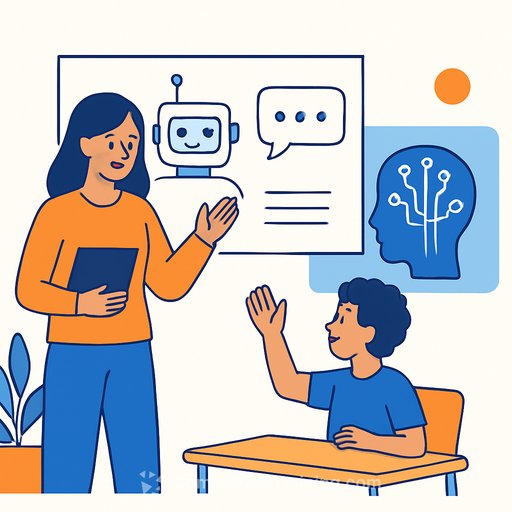Is your child's school using generative AI? 8 questions every educator should help parents ask
Human access to information has shifted a few times in history: the printing press widened access to books, search engines changed how we find answers, and generative AI is changing how we create them. The difference this time is speed. Schools are being asked to make decisions now while the ground keeps moving. Parents want clarity. Educators need a plan.
AI vs. generative AI: what schools should know
Traditional AI spots patterns and makes predictions. You see it when a map reroutes you or a bank flags a suspicious transaction. Generative AI goes further by producing content from prompts - a study guide, a quiz, a letter to parents, a lesson outline, even feedback phrased for a specific student.
It adapts in real time. Ask for simpler language, more examples, or a practice set for multiplication facts, and it delivers. Used well, it's like an always-available teaching assistant.
What schools are already seeing
Across surveys, interviews, and forums with hundreds of experts and school leaders, one theme is clear: generative AI is already in primary and secondary classrooms worldwide. Teachers use it to draft lesson plans, create differentiated materials, and build assessments. Students use it for practice, revision, and explanations at their own pace.
Because many tools remember prior interactions, they can pick up where a learner left off and prompt for repetition or extension. That's powerful - and it comes with trade-offs educators must manage.
Key risks include over-reliance on prompts instead of thinking (cognitive offloading), academic integrity concerns, biased or inaccurate outputs, and privacy exposure. The bigger fear: losing the human core of education if we let tools replace relationships and judgment. For policy and guardrails, see UNESCO's guidance on generative AI in education here.
8 questions parents should be asking your school
Use these prompts to set expectations, build trust, and align practice to learning goals.
- 1) What's the school's plan? Do we have a clear framework for adopting AI tools, with goals, scope, and decision-makers? If not, what's the timeline to create one?
- 2) How is AI used today? Which tools are in classrooms right now? Are they teacher-only, student-facing, or both? How are we monitoring impact?
- 3) What's next? What pilots or rollouts are planned for the next 6-12 months? How will we evaluate them before expanding?
- 4) Where will AI boost my child's learning? Show a concrete use case - for example, practice in multiplication, writing feedback, or inquiry tasks in science and technology - and how we'll measure improvement.
- 5) How are we protecting privacy? What data do tools collect, where is it stored, who can access it, and how long is it kept? Do we use data-minimizing settings and signed agreements?
- 6) How do we teach responsible use? What instruction do students receive on the pros, cons, and limits of AI? How do we address bias, inaccuracies, citations, and academic integrity?
- 7) How are we supporting students with identified needs? Which AI features (text-to-speech, language simplification, visual supports, pacing) are approved, and how are they tied to learning plans?
- 8) What about home use? Which tools are recommended, and what devices or access are required? Can the school host a workshop so parents and carers learn how to use AI well?
Practical steps for school leaders and teachers
- Start small with clear guardrails. Pilot a narrow use case (for example, formative feedback in writing) and document outcomes, risks, and workflows.
- Bake academic integrity into design. Use process evidence (drafts, think-alouds, oral checks) and specific prompts that require personal or classroom context.
- Set privacy defaults. Disable chat histories where possible, avoid uploading sensitive data, and use approved accounts, not personal logins.
- Teach AI literacy, not just tool tips. Model verification, ask students to compare outputs, and make bias and error-spotting part of assessment.
- Communicate early and often. Share your plan and rationale with families, and invite feedback through Q&A nights or short demos.
- Invest in staff capability. Short, frequent PD beats one-off sessions. If you need curated options by role, see this resource for educators and related jobs here.
Where this is heading
No one has the final playbook, and the tools will keep changing. What won't change is the need for great teachers, strong schools, and thoughtful parents. The work now is to keep human judgment, relationships, and values in front - and use AI to extend, not replace, what educators do best.
Your membership also unlocks:






